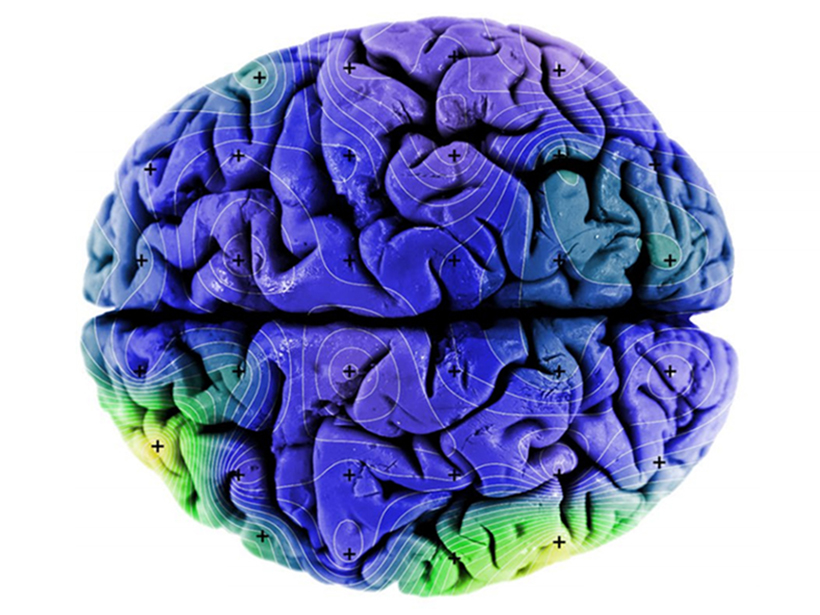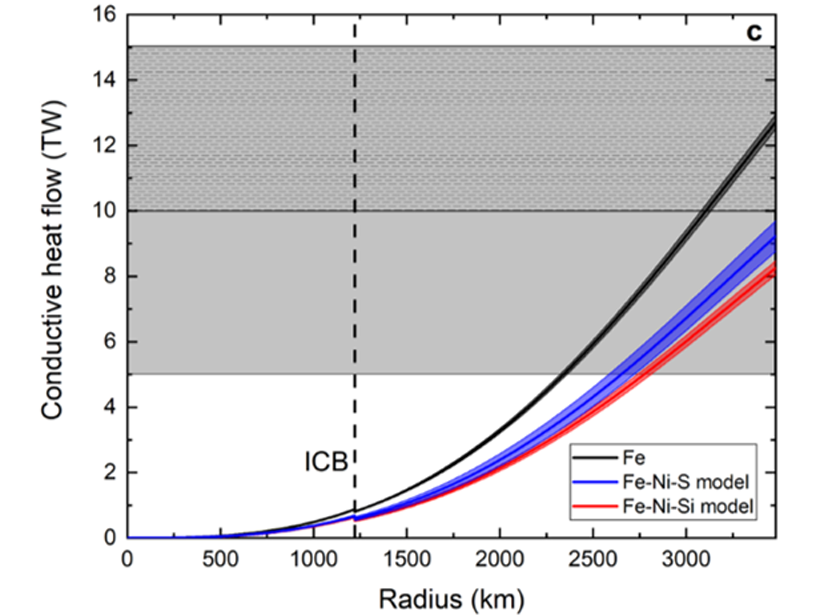Here’s the first map of the magnetic mineral magnetite in the human brain. Turns out that our brain stem may be full of it.
magnetic fields & magnetism
Computers Tease Out Secrets of Jupiter’s Aurorae
Aurorae once classified by human eyes are now being sorted by machines. The change may help astronomers understand how the mysterious features are powered.
Explaining the Missing Energy in Mars’s Electrons
Electrons energized and trapped at Mars were thought to lose energy inside the planet’s magnetosheath, but new research suggests a different explanation of spacecraft data.
Thermal Convection Can Power the Geodynamo
New high-pressure experiments on fluid iron suggest thermal convection without compositional buoyancy is sufficient to drive the dynamo generating Earth’s magnetic field.
Hearing the Sun Tock
The appearance of sunspots—their number, duration, and location—suggests that the dynamics of the Sun’s outer layer is synchronized with an internal clock.
The Infrastructure Impacts of Solar Storms
A new book brings together insights from the space weather, geophysics, and power engineering communities to understand the characteristics and impacts of geomagnetically induced currents.
A Thermochemical Recording Mechanism of Earth’s Magnetic Field
A laboratory study assesses thermochemical remanence as a reliable paleointensity recorder, which could open new venues for studying Earth’s ancient magnetic field.
Solar Spike Suggests a More Active Sun
Radio waves are providing a new way to probe the Sun and suggest that the magnetic field of its corona may be stronger than long thought.
Molecular Ions Unexpectedly Frequent in Earth’s Magnetosphere
A Japanese satellite reveals rapid and surprisingly frequent transport of molecular ions from the ionosphere to the magnetosphere, under not only extreme but also moderate geomagnetic conditions.
Was Ahab Truly “Lord of the Level Loadstone”?
Herman Melville’s bicentennial provides a good excuse to examine how well the Pequod’s monomaniacal mariner knew his geomagnetic magic.










